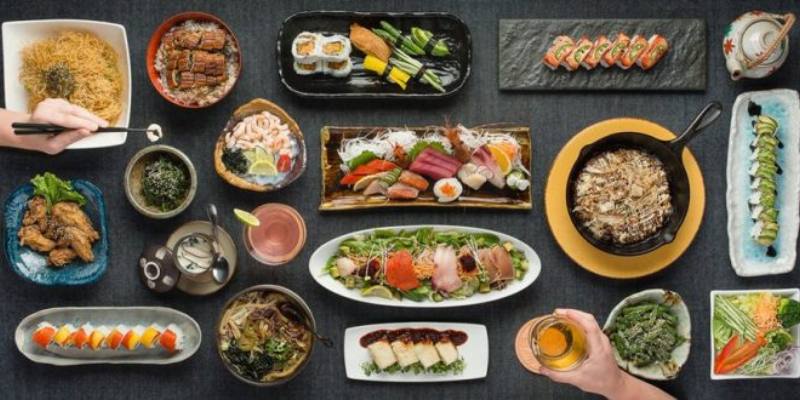


Uniting people of different generations on a single table, dishes are undoubtedly one of the elements that best reflects the culture of the country. From eating habits to table rules, from ingredients used in cooking to cooking techniques, each element reveals the traditions and customs of society in the most delicious way. And Japanese cuisine, which has been the subject of many researches for centuries with its deep-rooted history, is definitely one of the cuisines that express the culture best. We share with you one bite-sized piece of information about the history and characteristics of Japanese cuisine which is one of the most popular cuisines, with “A bitesize history: Japanese cuisine”.
Meat was forbidden for more than 2 centuries
Although fish and meat are an integral pat of the Japanese diet today, the cuisine was actually once vegetarian! When Buddhism was introduced to Japan in the Kofun period (300-538 CE) it became forbidden to consume animals.
Sake and its ingredients
Sake, also known as nihonshu (Japanese liquor), originated in the Nara period (710-794 CE) and can be drunk either hot or cold. It’s brewed using only 4 ingredients- can you guess them? Rice, water, yeast, and… mold – some ingredients are definitely more appetizing than others.
Where is the origin of green tea?
Contrary to popular belief, Japanese green tea actually originated in China before it was introduced to Japan in the 9th century. Rumour has it that it was discovered when some tea leaves fell into an Emperor’s pot of hot water.
A must in Japanese cuisine: rice
Where would Japanese cuisine be without rice? The grain was first cultivated in the yayoi period (1,000 BCE-300 CE) and ancient traditions, such as eating sticky cakes made from mochigome (glutinous rice) every Japanese New Year, have stuck around until today. New year, same mochi!
How chopsticks settled in culture?
Chopsticks can be used to cook, stir, serve and eat. They were invented in the Kofun period but many people at the time still ate with their hands as only the nobility could afford these slender utensils.
Tokyo’s importance in Japanese cuisine
Japanese cuisine started gaining its flavour in 17th century Edo, which later became known as Tokyo. The city is now home to the most restaurants with Michelin stars in the world. The Edo period (1603-1868 CE) was also known as the samurai age. It wouldn’t have been a surprise to see the streets filled with sword-swinging samurais standing next to vegetable farmers selling their produce.
The rising star of popular culture: ramen
Ramen has always been a go-to student meal. After an influx of student moved from China to Japan in the 17th century, restaurants started to fuse Chinese noodles with Japanese cuisine to create the quick and easy dish.
Japanese cuisine, an icon in every era
Japanese food may have been grown in the fields but it was raised in the streets. As the Edo population grew to 1 million in the 18th century, an influx of single men brought about a new style of eating while standing at food stalls called yatai. What comes to mind when you think of fast food? It might not be nigiri sushi, tempura and soba noodles but these were actually known as the fast-foods of the Edo era. You can’t have Japanese cuisine without umami – the fifth taste that combines sweet, sour, salty, and bitter. In 1908, chemist Kikunae Ikeda discovered this taste which can be found in a wide variety of foods, from peas and pork to cheese and carrots. From the origins of Japan’s cuisine to its influence today, the history of these mouth-watering dishes gives you a taste of where Japanese food came from.
Google Arts & Culture